The prototype. Beginning with its class Y2 in 1912, the N&W spent 40 years building and operating 2-8-8-2 articulated compound steam locomotives. Compound or Mallet articulateds were slow-speed locomotives that used their steam twice: first in the rear high-pressure cylinders and then in the (larger) front low-pressure cylinders. Simple articulateds used only high-pressure steam. The United States Railroad Administration (USRA), which controlled American railroads during World War I, adopted the N&W compound 2-8-8-2 as one of its standard designs.
The culmination of the 2-8-8-2 was the N&W class Y6b. The Y6b could be operated as “simple” in low speeds where all the cylinders received high-pressure steam for greater starting tractive effort, and then be switched to run as a compound as the speed increased. A Y6b generated 5,600 hp at 25 mph and could reach a top speed of 50 mph.
The N&W’s Roanoke Shops built the first 17 Y6b locomotives between April and July 1949 followed by seven more in 1950 and early 1951. Six more were delivered between November 1951 and April 1952. The last Y6b, no. 2200, was also the last mainline steam locomotive built in the United States.
The locomotive and tender are made of die-cast metal with well-defined rivet seams and other cast-in detail. The model has a large smokebox door appropriate to its prototype. Separate detail parts include handrails and piping.
The cab interior includes an accurately detailed boiler backhead and glazing in all windows. Painted engineer and fireman figures are included in the cab, as well as a brakeman in the doghouse.
All lettering is crisply printed and accurate according to prototype photos. The builder’s plates along the smokebox and the tender class plate are legible.
Mechanism and electronics. On a prototype articulated steam locomotive, such as the Y6b, a hinged joint allows the front engine to swivel around a curve. The rear engine is rigidly attached to the frame. On the BLI model, both front and rear engines swivel, which is unprototypical but allows the HO scale Y6b to negotiate tight-radius curves.
The can motor and flywheels are enclosed by the die-cast metal boiler. Universal shafts connect to gearboxes on the third axle of each engine. Metal siderods transfer power to the other axles.
The heavy die-cast metal boiler and chassis combined with traction tires make the Y6b an exceptional puller, as you can see in the charts on the next page, and hill climber. During a run on our club layout, the Y6b pulled 54 freight cars up a 3 percent grade.
The model has excellent electrical pickup, as it negotiated a yard ladder of no. 6 turnouts and crossovers without so much as a flicker of its headlight.
There are three holes in the locomotive drawbar to adjust the spacing between the locomotive and tender, but
I found that only two are functional. The hole farthest at the end allows for a scale 2′-6″ spacing between the cab deck and tender deck. The folding cab apron spans this distance and does a good job concealing that it’s about a foot too wide to be prototypical. The center hole closes the distance by another scale 6″, but keep in mind the model then requires wider radius curves to avoid derailing. I found the closest hole to be non-functional as it brought the locomotive and tender too close together to negotiate a curve.
The Paragon2 decoder is mounted inside the tender above two 28mm round downward-facing speakers. A wiring harness runs from the tender to a socket under the locomotive cab.
Despite the limited DC control range of 8.5 to 12 volts, I was impressed by the responsiveness of the Y6b. Operation on a DC layout was even better after I installed the BLI DCMaster analog controller (available separately for $39.99) between the power pack and the track. This product lets you trigger sound
effects and adjust some configuration variables (CVs) when running the model on a DC layout. For example by using the DCMaster to adjust the analog starting voltage, I increased the model’s control range, so that it moved at 5 volts.
The exhaust chuffs, whistle, and other sound effects did a credible job replicating the prototype. White smoke puffed out of the stack in sync with the exhaust. When traveling in reverse, the tender’s LED backup light turned on. When I rapidly decreased the throttle I heard squealing brakes.
DCC operation. I also tested the model with an MRC Prodigy Advance and a CVP EasyDCC system. The model accelerated smoothly throughout its speed range to a prototypical top speed of 50 scale mph. When I set the decoder to 128 speed steps the model crawled along at less than 1 scale mph in speed step 1.
The many user-triggered functions (F0 to F28) include the headlight, bell, injector, and whistle. Other functions simulate the sound of coupler slack letting out or the locomotive making a water stop. Although there’s a slide switch under the cab for the smoke unit, it’s easier to turn it on or off using F7 on a DCC throttle. I also appreciate that most of the functions can be remapped to keys other than their defaults, which is helpful for those who have throttles that don’t support 28 function keys.
There are functions that trigger background sounds, such as a lumber mill, and anachronistic radio dialogue that I didn’t find useful for a steamer.
Like other Paragon2 models, the Y6b includes a macro recording function. A modeler can record a locomotive operating sequence, for example, of the Y6b running from one point to another on a layout at a specific speed and signaling a grade crossing. Then that sequence can be played back, allowing the locomotive to effectively run on auto pilot.
An instruction manual outlines supported functions and CVs. I easily programmed the decoder’s address to the locomotive number (2200). The volume level of each sound effect can be adjusted independently. In addition to adding momentum for realistic starts and stops, the decoder supports custom speed tables. A free, downloadable technical manual is available at the BLI website.
The BLI Y6b captures the sights and sounds of N&W no. 2200 and boasts pulling power worthy of its legendary prototype.
Manufacturer
Broadway Limited Imports, LLC
9 East Tower Circle
Ormond Beach, FL 32174
www.broadway-limited.com
Era: 1950 to 1960 (as detailed)
Road numbers: 2200, 2196, 2197, 2198, 2199. Painted, unlettered version also available.
Features
- Die-cast metal locomotive and tender construction
- Electrical pickup on 12 drivers and 8 tender wheels
- Five-pole skew-wound can motor with dual brass flywheels
- Metal Kadee-compatible knuckle couplers on pilot and tender
- Minimum radius: 18″
- Operating smoke unit
- Paragon2 DCC sound decoder with dual speakers
- RP-25 metal wheels in gauge
- Traction tires on the rear drivers of each engine
- Weight: 2 pounds 12 ounces (locomotive and tender), 2 pounds (locomotive only)





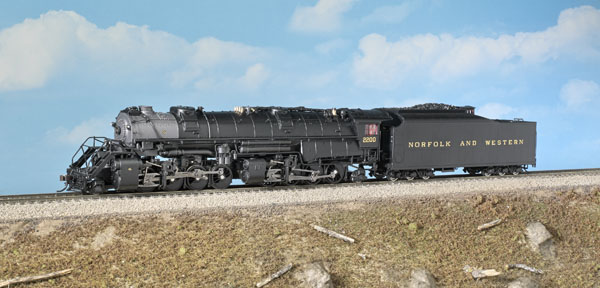
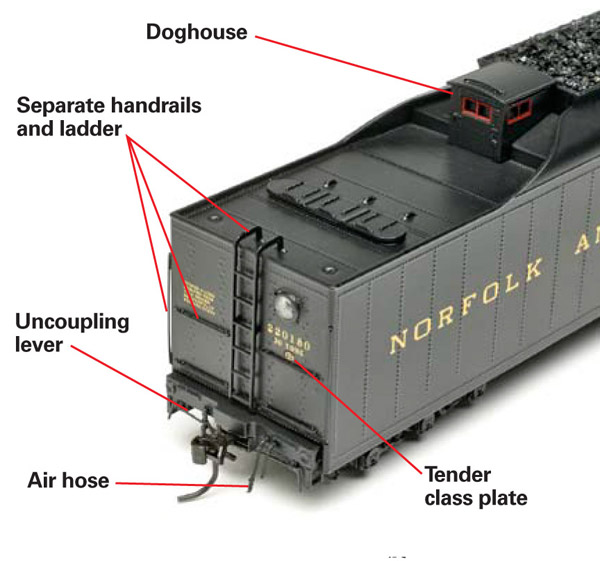
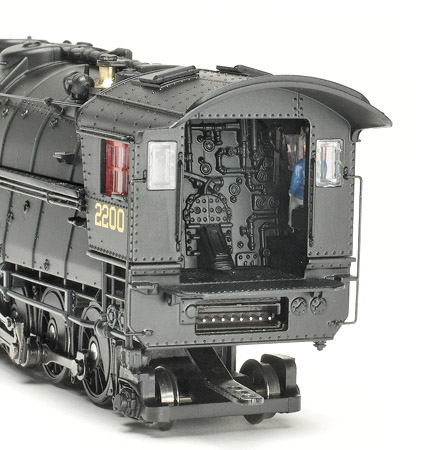
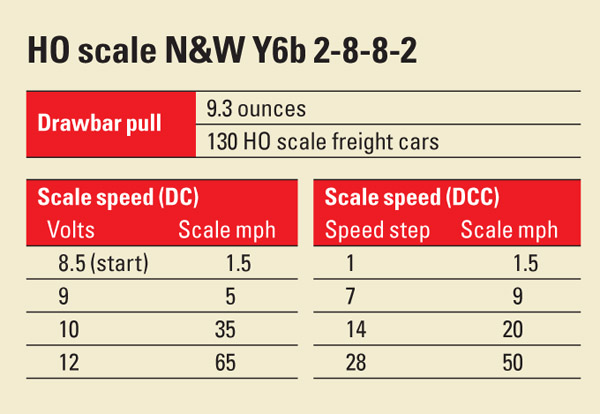

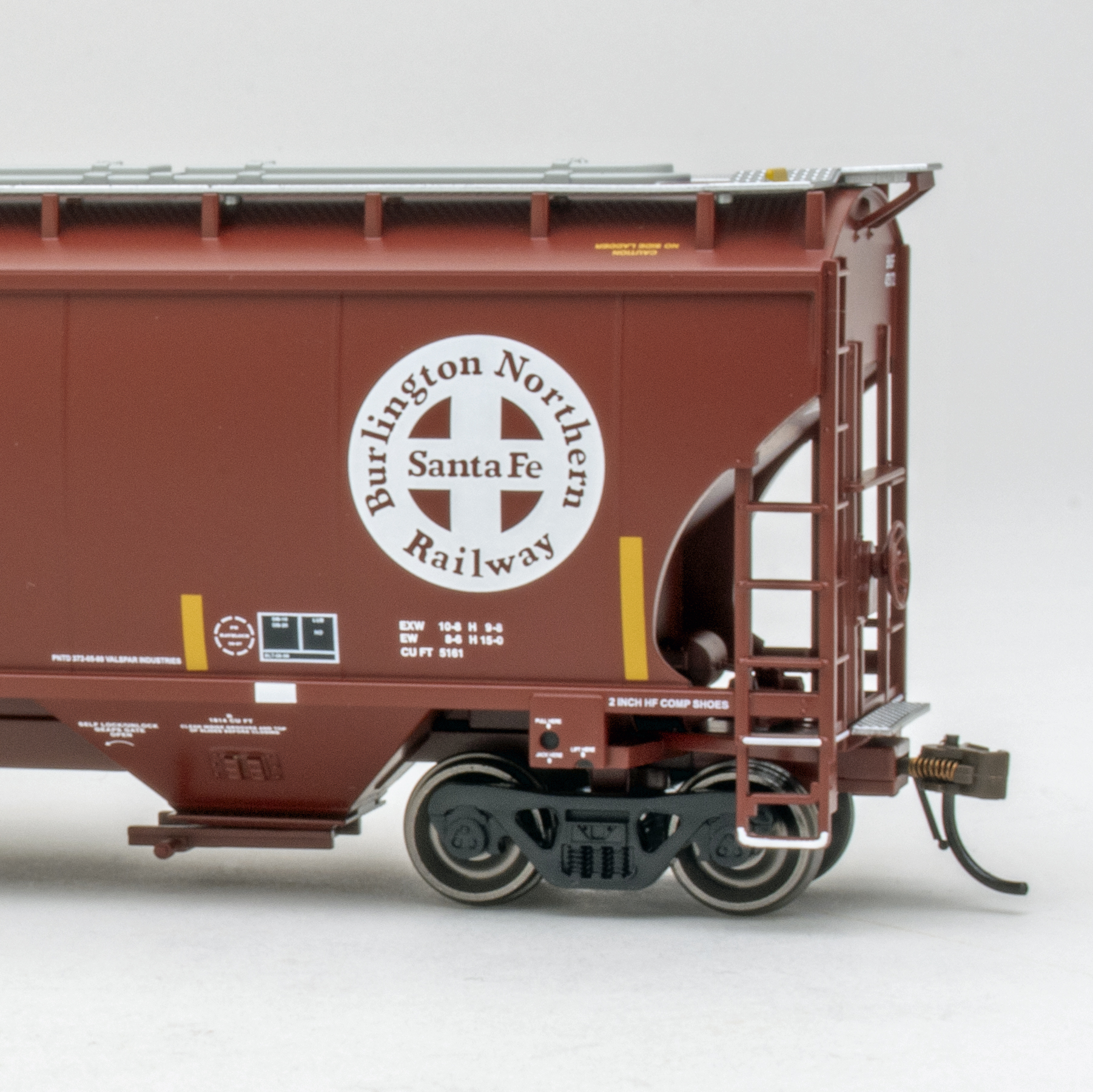
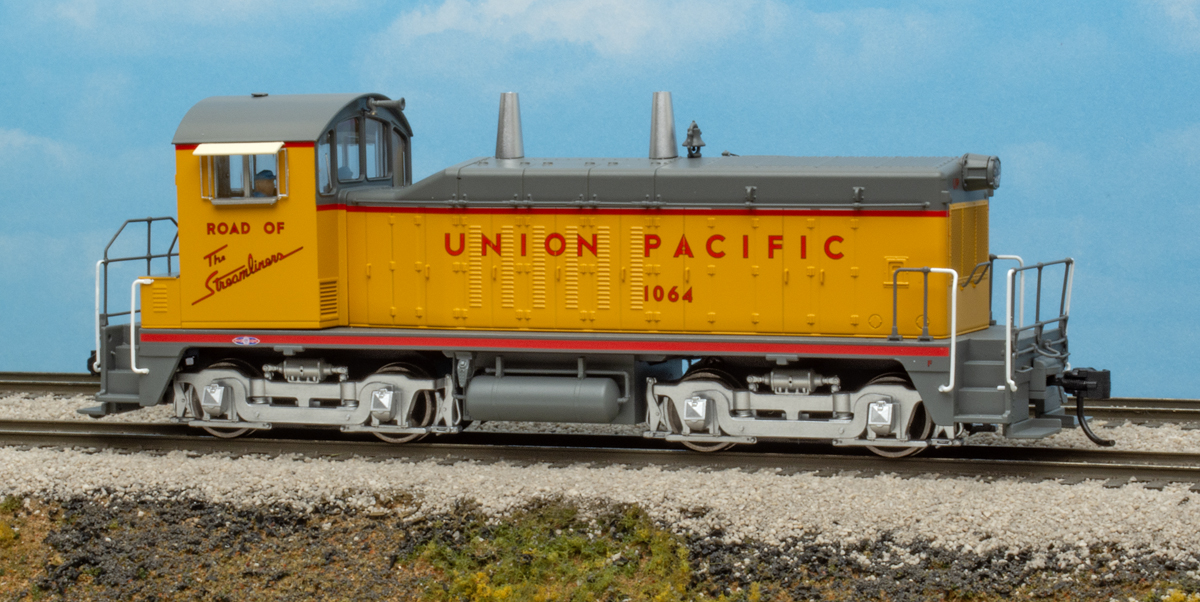
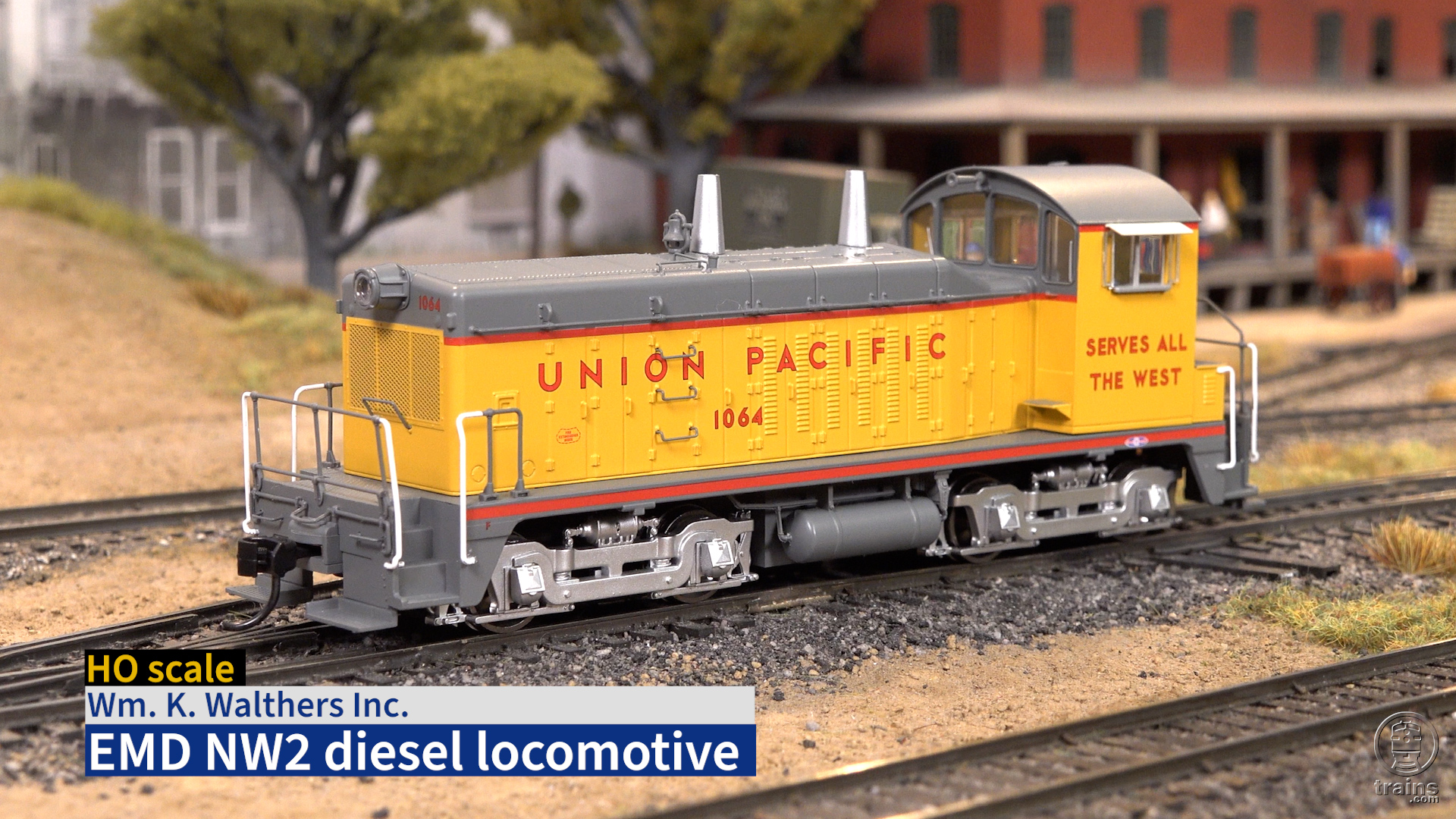
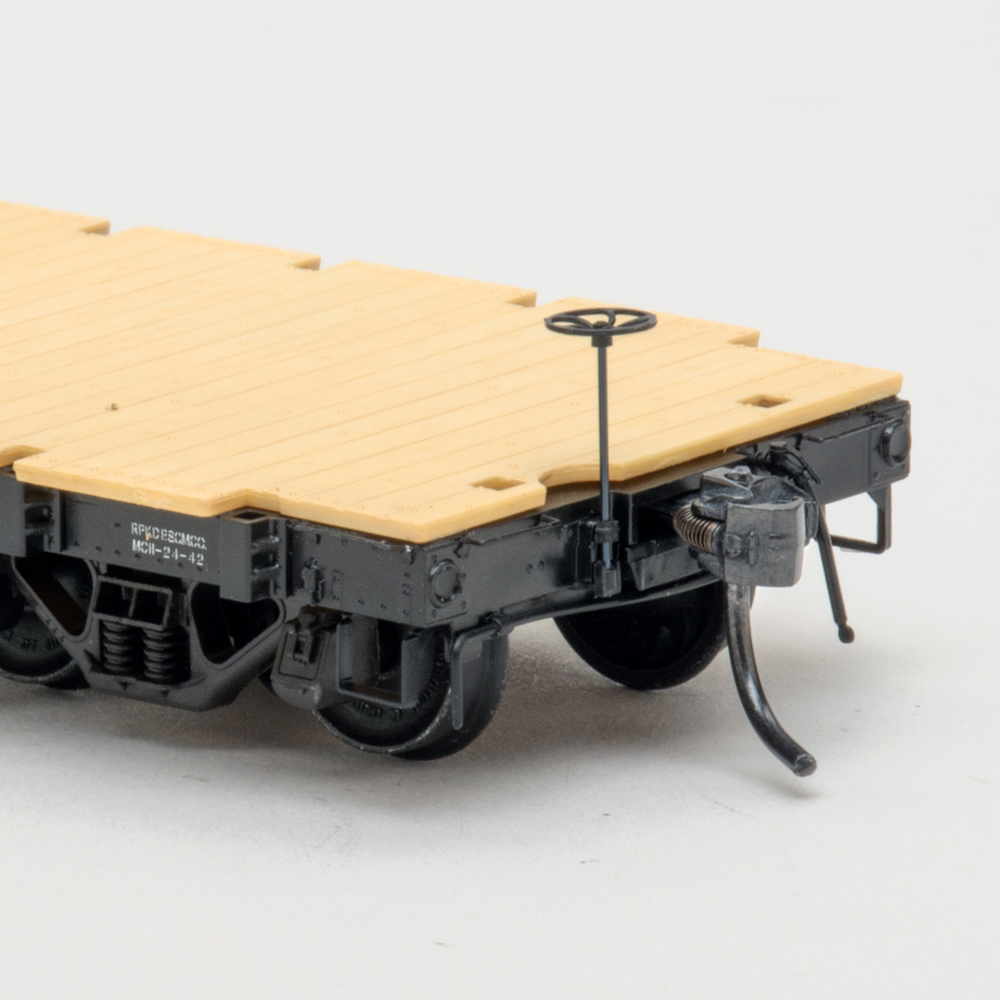




Looks like another winner for Broadway Limited!
Sounds like a great loco. But a little to expensive for me. I am installing a sound unit into my y6b. My wife, who passed away last March, bought it for me back in the 60's. She paid $60 for it at the time,,still runs great. Gee I miss my wife after 62 years, 18 grand kids and 23 great grandchildren
I have 6 BLI Steam locos and am very pleased with all of them. The sound units are good and with some added weight they run and pull great with out traction tires. Two 2-8-2s and Four 2-10-4s. The other six steamers I have are Two 2-6-6-6s and four 2-8-4s by Rivarossi. I will suggest that the more modern steamers are better than the older versions that may need to have new motors as well as decoders etc added. A sound system is likely to run about 100 to 120 dollars for components and in the case of the older versions may require additional work as well.
Great model and review.
I would like to know how this new release compares with BLI release 1
The BLI Y6B couldn't be much better,the best yet. Wouldn't you like to a Y6B in tug of war with the Big Boy…Wow !!!!
What a great steamer. The sound is about the best I have heard and what a great model.. It is a must have….
BLI's provision of sound capabilities on layouts using regular DC power appeals to some of us who haven't installed DCC.
I welcome the reviewer's mention of the apparent use of tooling originally made for a model offered under another brand name.
Model railroaders who like the real Y6b's but can't afford this model might want to look for lightly used Rivarossi HO locos first offered by AHM in the 1960's.
The BLI N&W Y6b is a great model of a great engine! The smoke is a important improvement of original PCM model.
The only regret is that now I am wondtring with the oher Y's, what about the Y6, Y6a, Y5, Y4 …!